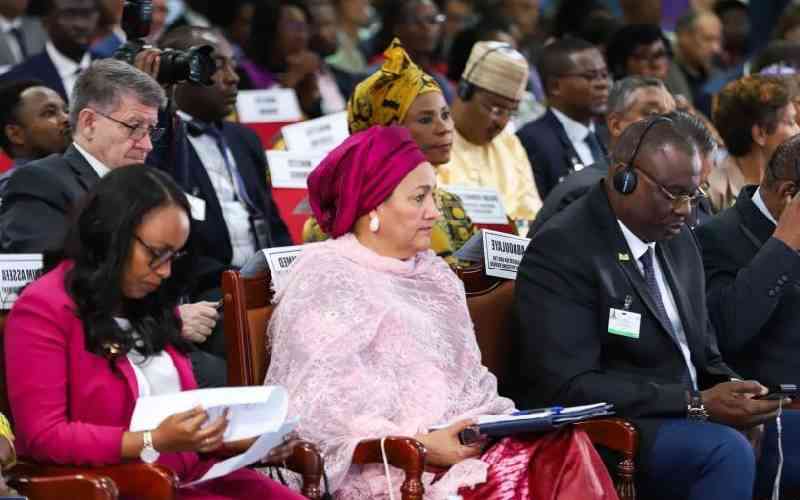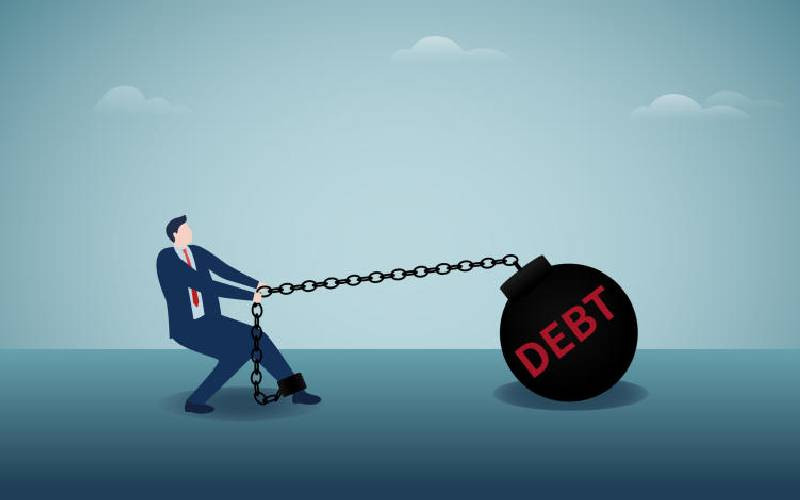The Senate Committee on Finance and Budget was smarting for a fight. As custodians of county affairs in the capital, they were concerned that counties had last received cash in October last year, grinding services to a halt.
Led by Mandera Senator Mohamed Mohamud, the committee had anticipated grilling Treasury Cabinet Secretary Henry Rotich and his Principal Secretary Kamau Thugge.
When the Treasury bosses walked in with huge files to explain the current crises, the stage seemed set for a bashing of the custodians of the country’s coffers.
Indeed, it took off in script, with CS Rotich explaining circumstances in which the delays were occasioned; a legal loophole and lower tax collections by the Kenya Revenue Authority (KRA).
In what has become the fashion, Rotich threw numbers around, first estimating that the taxman was short by Sh53 billion or Sh63 billion and cursorily promising to avail the exact figures later.
He glossed over reforms at KRA, which he claimed would turn around fortunes of organic revenues. Then he dropped a bombshell that the Government was broke and needed to cut budgets. He said Treasury plans to cut allocation to counties by Sh18 billion and to national government by Sh60 billion. This means the State is running on a revenue shortfall of nearly Sh80 billion.
But it was Dr Thugge who on realising the point had not sunk in, decided to let the cat out of the bag. Kenya was not only broke, but the amount it’s slashing is half the money raised by the Eurobond, just days after securing the $2 billion (Sh200 billion) debt.
“The deficit is Sh84 billion, so we will need to cut county budgets by Sh16 billion to Sh18 billion and national government will take the Sh60 billion hit,” Thugge said.
While this came as a shocker disrupting the flow of the meeting on the cold Wednesday morning, it is essentially typical of how Treasury has been able to rake up so much debt while Parliament stood aside and watched.
Put debt Ceiling
Legislations made under the Jubilee government quietly took away Parliament’s direct control over the amount Treasury is allowed to borrow and gave it to an Executive too ambitious on big ticket projects and dogged with tenderpreneurs seeking to mint quick cash.
In 2014, the Government approached Parliament to increase the external borrowing ceiling by Sh1.3 trillion to Sh2.5 trillion and pushed up the total debt to Sh2.4 trillion. They would have had to do this every year, but the new Government had other plans.
Under the new Public Finance Management Act of 2015, this parliamentary oversight role was removed and Parliament was given a say over the budget while Treasury drove the agenda.
The International Budget Partnership (IBP) says MPs became short sighted and were only concerned in securing additional perks for themselves and, to a lesser extent, other oversight institutions (such as the Office of the Auditor General).
“The biggest mistake that MPs make is that they do not pay attention to the revenue side of the budget until after they approve the expenditure side,” Head of Research at IBP Jason Lakin said.
Stay informed. Subscribe to our newsletter
Without the need for the old process, Treasury had a free hand to decide how much to borrow and MPs were not keen, willing to rubber stamp the budget so long as they got their cut. “Initially, we had the nominal debt ceiling which was at Sh1.8 trillion, the last time it was changed it moved up to Sh2.5 trillion,” CS Rotich said.
“Then we progressively moved away from that to the best practice where the ceiling is a proportion of the size of the GDP. Rather than every year coming to Parliament to raise the ceiling, we just look at the GDP and raise.”
A trillion each year
Rotich told Senate, “I do not know if we should go back to that process. A lot of discussions were done when that PFM Act was done and the other one repealed.”
Farhiya Ali, nominated Senator from Wajir County, noted that this created the minefield that has driven the country to the precipice while allowing Treasury to avoid scrutiny from Parliament.
Ms Ali said that Treasury then came up with so many parameters that MPs no longer had an idea what kind of debt they were dealing with. “We should agree on one metric because we keep hearing debt to GDP and some other figures which we cannot understand even us with financial background and what about the mwananchi whose taxes actually pay the debt,” Ms Ali posed.
Without a cap, the Government quickly hit a milestone when it crossed the Sh3 trillion mark in 2015 and has been doing on average a trillion each year.
In 2017, the Government casually crossed over Sh4 trillion and it is poised to do more than Sh5 trillion by the half of 2018.
In the last there years, Kenya has taken almost eight syndicated loans, one bilateral loan with China and one bilateral loan with AfriExim Bank. Half of the syndicated loans were taken from little known bank with a representative office along Lenana Road in Nairobi, Trade Development Bank (TDB) formerly PTA Bank.
When the Government was unable to pay the $750 million syndicated loan in October last year, it was TDB that offered to pay off the creditors and extend Kenya a similar amount for seven years.
In fact during the election year, TDB gave Kenya $250 million in January and helped it arrange two other syndicated loans of $200 million and $300 million. This was to help the Government cope as it increasingly becomes the last hope for Treasury.
However, Rotich said, “TDB is a DFI (Development Finance Institution) so they are good at giving more long term loans rather than the small two year ones. There is no specific arrangement and they just participate in the issues just like the other banks. But it is part of our bank, it’s the regional bank formerly PTA.”
And while doing this, Treasury sought to calm everyone citing that under the floating regime debt as a proportion of the economy was all right. But at the rate which debt is being gobbled up, this could not provide sufficient cover given the debt is approaching 60 per cent of the GDP.
Treasury mandarins have been shifting the sustainability target from 50 per cent to now declaring that 74 per cent of the GDP is still acceptable.
“On the World Bank they have this country policy and institutional assessment (CPIA) capacity, the highest rating I think is 6, we are just below 4, at 3.8, 3.9 around there and we are probably ranked among the top 2 or 3 in Africa. Based on that rating they also set thresholds of debt sustainability and because we are ranked quite high our threshold for when debt sustainability becomes worrying is 74 per cent,” Thugge said last year.
“If it exceeds 74 per cent then these are signals that you are approaching an unsustainable position of debt,” he said.
The PS added that Net present value of debt to revenue collected, the threshold is 300 per cent as we are now in the range of 240 to 250 per cent again below the threshold.
All these figures are apparently laid out in graphs and tables for Parliament that does not even look at them.
“What I do not get is that when we read the budget, we have a deficit and the only way we can do that is to borrow, Parliament needs to look at the budget together with the Division of Revenue Bill, the Medium Term Debt Strategy and the Budget Policy Statement,” Rotich told the Senate Committee.
Mr Lakin says that while Parliament has done little to control Treasury’s appetite for borrowing, Treasury has no moral authority to blame them.
“It is a bit rich for the Treasury to blame Parliament for their own mistakes, but it is absolutely correct that they can and should challenge government on the debt,” he said.
IBP says that the problem lies in the timing of the several documents that Treasury tables which have made it difficult for Parliament to do its work.
The Finance Bill, which covers revenues, is passed later than the budget while the Budget Policy Statement and the revenue book produced by Treasury before the budget is approved.
Revenue coming in
Treasury also releases at the same time as the BPS in February a Debt Management Strategy Paper, which Parliament also does not pay attention to.
Mr Lakin says Parliament instead of receiving the budget and adding more costs, they should look at revenues and see how to reduce the gap called budget deficit, which is basically what Kenya has to borrow.
Unfortunately, even this year, Parliament decided to award themselves an additional Sh4.2 billion in the revised national budget, instead of containing expenditure.
Additions to the legislators’ collective budgets include Sh2 billion that would be spent to supervise county governments and Sh108 million to attend a regional games tournament.
Lakin says instead of looking at debt as proportion to GDP alone, the country should instead look at our ability to pay.
“The big question we should be asking when it comes to ability to pay in the short-term is about the relationship between revenue and debt payment, and not GDP and debt. In the short term, the question is whether you can pay your debt with the revenue coming in. It appears that this is increasingly not possible without interfering with the rest of the budget,” Lakin said.
 The Standard Group Plc is a
multi-media organization with investments in media platforms spanning newspaper
print operations, television, radio broadcasting, digital and online services. The
Standard Group is recognized as a leading multi-media house in Kenya with a key
influence in matters of national and international interest.
The Standard Group Plc is a
multi-media organization with investments in media platforms spanning newspaper
print operations, television, radio broadcasting, digital and online services. The
Standard Group is recognized as a leading multi-media house in Kenya with a key
influence in matters of national and international interest.
 The Standard Group Plc is a
multi-media organization with investments in media platforms spanning newspaper
print operations, television, radio broadcasting, digital and online services. The
Standard Group is recognized as a leading multi-media house in Kenya with a key
influence in matters of national and international interest.
The Standard Group Plc is a
multi-media organization with investments in media platforms spanning newspaper
print operations, television, radio broadcasting, digital and online services. The
Standard Group is recognized as a leading multi-media house in Kenya with a key
influence in matters of national and international interest.









